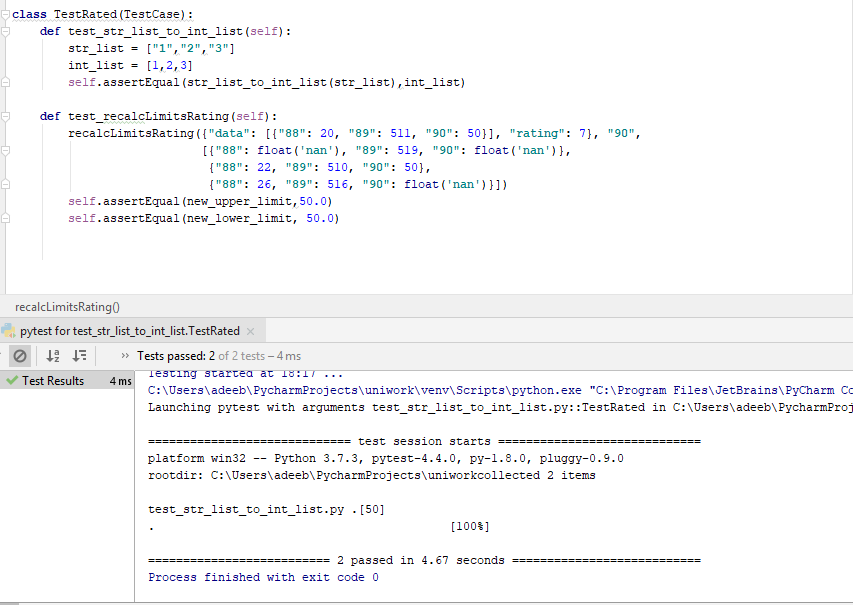Unit and integration testing
Firstly, we started by testing the most basic components of the algorithm. The algorithm is split into 2 parts; one part which runs as the event progresses and another once the event has been completed. For both parts of the function we need to ensure that they produce the correct limits and they also work when ‘NaN’ values arise. The tests also ensure that the json data is properly being converted into the required format.
Below is an example of the tests we did:


We have made some tests to make sure that all the correct views load in when the dashboard is started.


